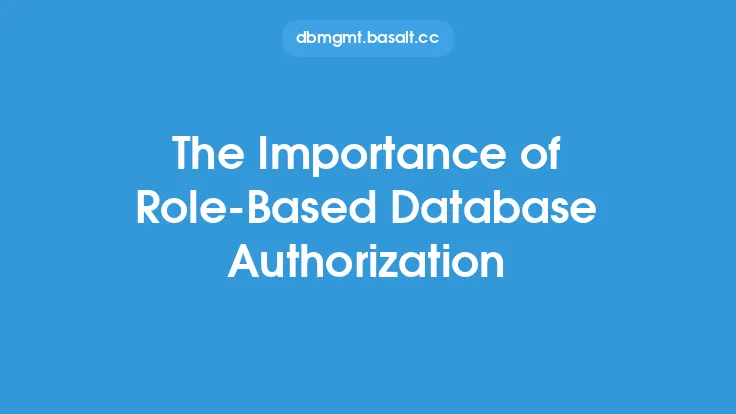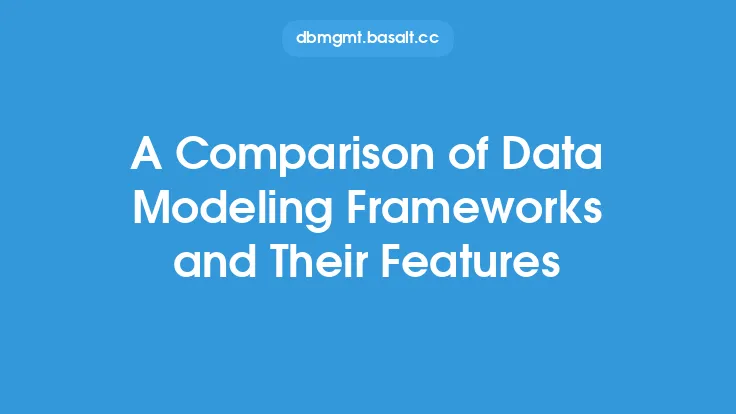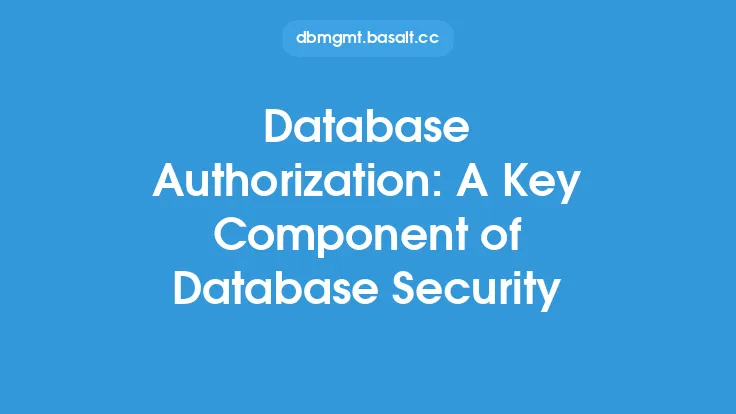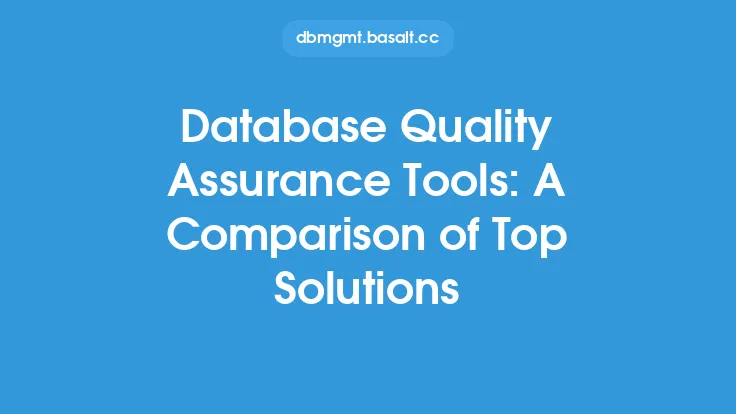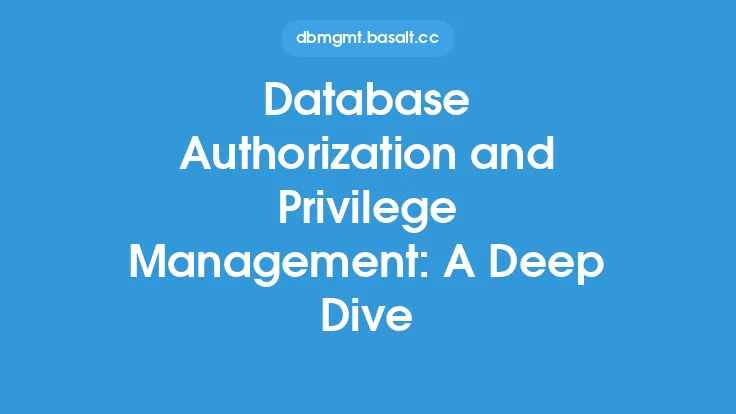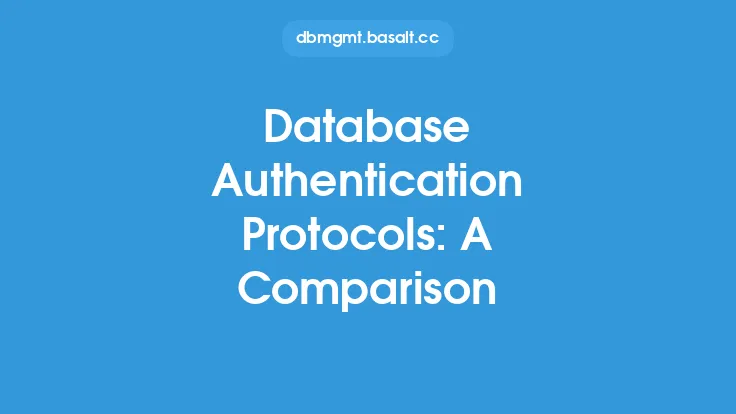Database authorization is a critical component of database security, as it ensures that only authorized users have access to specific data and database operations. Over the years, various database authorization models have been developed, each with its strengths and weaknesses. In this article, we will delve into the different approaches to database authorization, comparing their features, advantages, and disadvantages.
Introduction to Database Authorization Models
Database authorization models are designed to control access to database resources, such as data, schema, and operations. These models define the rules and policies that govern user access, ensuring that sensitive data is protected from unauthorized access, modification, or deletion. The primary goal of a database authorization model is to provide a flexible and scalable framework for managing user privileges, while minimizing the risk of security breaches.
Discretionary Access Control (DAC) Model
The Discretionary Access Control (DAC) model is one of the earliest and most widely used database authorization models. In DAC, access control is based on the discretion of the owner of the resource. The owner has the authority to grant or revoke access to other users, and the access control decisions are made based on the user's identity and the resource's ownership. The DAC model is simple to implement and provides a high degree of flexibility, as owners can grant access to specific users or groups. However, the DAC model has some limitations, as it relies on the owner's discretion, which can lead to inconsistent access control decisions.
Mandatory Access Control (MAC) Model
The Mandatory Access Control (MAC) model is a more restrictive approach to database authorization. In MAC, access control is based on a set of rules that are defined by the system administrator. These rules are enforced by the system, and users do not have the discretion to grant or revoke access to resources. The MAC model is more secure than the DAC model, as it provides a consistent and predictable access control framework. However, the MAC model can be inflexible, as changes to the access control rules require administrative intervention.
Role-Based Access Control (RBAC) Model
The Role-Based Access Control (RBAC) model is a widely used database authorization model that assigns users to roles, which define the access privileges. In RBAC, users are assigned to roles based on their job functions or responsibilities, and the roles are associated with specific access privileges. The RBAC model provides a flexible and scalable framework for managing user privileges, as users can be easily assigned to or removed from roles. The RBAC model also provides a high degree of security, as access control decisions are based on the user's role, rather than their identity.
Attribute-Based Access Control (ABAC) Model
The Attribute-Based Access Control (ABAC) model is a more advanced approach to database authorization. In ABAC, access control decisions are based on a set of attributes associated with the user, the resource, and the environment. These attributes can include user identity, role, department, location, and time of day. The ABAC model provides a highly flexible and scalable framework for managing user privileges, as access control decisions can be based on a wide range of attributes. However, the ABAC model can be complex to implement and manage, as it requires a sophisticated attribute management system.
Policy-Based Access Control (PBAC) Model
The Policy-Based Access Control (PBAC) model is a database authorization model that defines access control policies based on a set of rules and conditions. In PBAC, access control decisions are made based on the evaluation of these policies, which can include user identity, role, department, and other attributes. The PBAC model provides a flexible and scalable framework for managing user privileges, as policies can be easily defined and updated. The PBAC model also provides a high degree of security, as access control decisions are based on a consistent and predictable set of policies.
Comparison of Database Authorization Models
Each database authorization model has its strengths and weaknesses, and the choice of model depends on the specific requirements of the organization. The DAC model is simple to implement but provides a low degree of security, while the MAC model is more secure but inflexible. The RBAC model provides a flexible and scalable framework for managing user privileges, while the ABAC and PBAC models provide a highly flexible and scalable framework for managing user privileges, but can be complex to implement and manage.
Conclusion
Database authorization models are critical components of database security, as they ensure that only authorized users have access to specific data and database operations. The choice of database authorization model depends on the specific requirements of the organization, including the level of security, flexibility, and scalability required. By understanding the different approaches to database authorization, organizations can select the most appropriate model for their needs, ensuring the security and integrity of their database resources.
